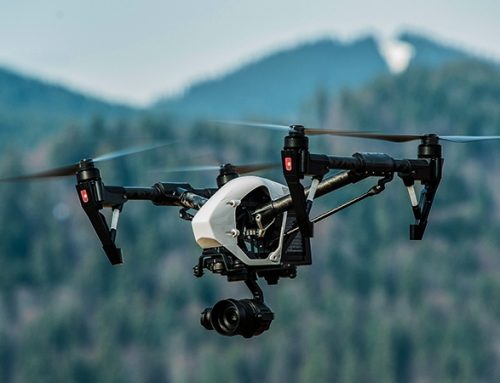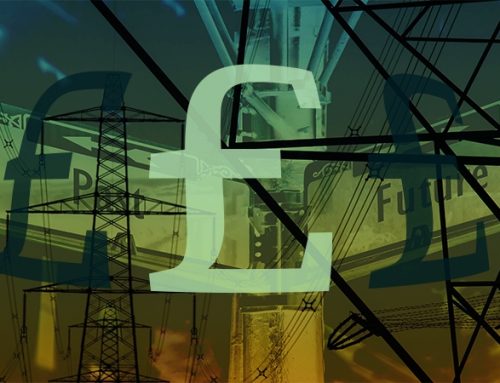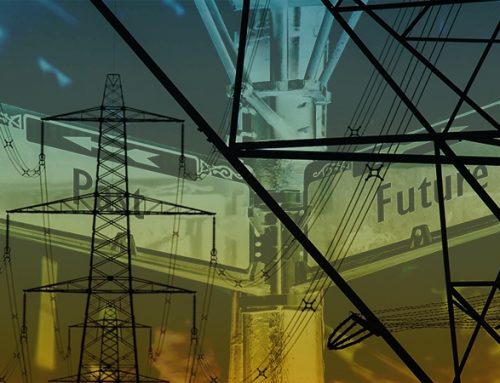The recent entry of Tesla into the PV market has generated renewed interest in building-integrated solar PV – a technology which allows the structure of buildings, walls and windows as well as roofs – to generate electricity thereby reducing the net load of the building. New developments go well beyond simple installation of rooftop solar panels, with the generating capability being an integral part of the fabric of the building.
I have written previously about the development of solar PV glass, and the improvements in transparency levels, but BIPV is not limited to glass-based materials.
“BIPVs are conceived as a way to replace traditional construction materials with energy generating construction materials and as such they are an essential part of the building. They can include roof shingles, windows, ventilated facades or curtain walls and notably also they can include additional functionalities such as thermal insulation, acoustic insulation or water proofing,”
– Dr Maider Machado, leader of BIPV activities at the Spanish research institute Tecnalia, which is leading the European PVSITES project, quoted in Engerati.
BIPV systems have a number of advantages…
The advantages of BIPV systems are not difficult to imagine:
- Reduced building energy consumption;
- Reduced need for other building materials which are replaced by the PV structures;
- On-site energy consumption with negligible transmission losses; and
- No additional land requirements.
The efficiency benefits can be significant, as evidenced by a number of academic studies. Quesada et al carried out an extensive literary review of solar façades. Their paper cited Spanos et al. who examined the actual costs of electricity produced by photovoltaic generators placed on buildings in UK and Greece, and concluded that PV glazing systems which preserve high transparency and can replace conventional glazing materials, and even at sub-optimal tilt angles, the reduction in cost of generated electricity from integrated systems is 32% and 16% for UK and Greece, respectively, versus non-integrated systems.
They also cited Chow et al. who examined the energy performance of an experimental photovoltaic glazing system as applied to a typical open-plan office environment in Hong Kong. The semi-transparent single glazing PV system was found to reduce electricity consumed for space cooling by 23%, whereas the semi-transparent natural-ventilated double-glazing PV system generated cost savings of 28%.
The European Smartflex project installed a 600 square metre semi-transparent photovoltaic façade at glass manufacturer Glassbelt’s site in Klaipeda, Lithuania. A total of 75 glass solar modules from Lithuanian manufacturer Via Solis, with different shapes, colours or imprints, were used in the project, which was designed to demonstrate the feasibility of BIPV systems with crystalline silicon cells.
The system generated an annual yield of 833 kWh per kilowatt of installed power which is almost as much as the average PV installation in Lithuania. The cost of the system was €550 /m2 which is similar to a traditional stone or metal façade. A comparable glass façade would cost €840 /m2, making the PV solution cheaper. The system also provided a shading effect which reduced the internal temperature in the summer, reducing cooling needs when compared with conventional glass.
…but barriers to adoption remain
Prieto et al explored the barriers to the adoption of BIPV solutions and found that, unsurprisingly, cost was a major factor. Other factors related to design aspects, performance of the systems (efficiency, energy), the knowledge to design, implement or operate them, or the need for extra maintenance activities.
The design and installation of a BIPV system is more complex than traditional roof mounted systems, requiring the cooperation of a number of trades including electricians, roofers, façade or cladding specialists, architects, engineers etc. However, as the market develops, more contractors will develop expertise which will drive improved efficiencies and lower costs.
The PV performance may be sub-optimal due to architectural constraints, reducing the financial return of the system relative to a roof mounted system with the same capacity. PV surfaces may suffer from partial shading, and although this can be mitigated with the use of micro inverters or DC-DC optimisers, these will increase the cost of the system. Ventilation of the PV systems also needs to be taken into account to avoid excess heating of the modules, which could increase system degradation and hence reduce the lifespan of the installation.
BIPV technology has actually been around for a while, and although a number of interesting developments are in the pipeline, there have been numerous failures in recent years. Physical challenges have inhibited the success of BIPV since traditional BIPV systems generally involved pre-manufactured solar cells, with limited size choices, which architects struggled to integrate with conventional construction materials. The emergence of thin film technologies provides a solution to this problem, however these systems can be expensive.
New organic photovoltaics are coming on to the market, which are both cheaper and less toxic than traditional thin film systems. Other interesting developments involve systems which absorb non-visible wavelengths while transmitting the visible spectrum meaning that the entire façade including windows could generate electricity.
BIPV has been used in some high profile projects recently, and Tesla’s entry into the market has provided renewed interest. Perhaps the new technologies under development will see building integrated photovoltaics finally reach the mainstream.
A selection of BIPV developers
Build Solar
 A team of researchers from the University of Exeter has founded a company, Build Solar, to commercialise solar PV glass blocks it has developed. The blocks, called Solar Squared, would replace traditional glass bricks. In addition to solar cells, the blocks contain specialised optics that focus the light onto the PV material. The company believes its blocks have higher thermal efficiency than traditional glass blocks, and expects to launch its product in 2018.
A team of researchers from the University of Exeter has founded a company, Build Solar, to commercialise solar PV glass blocks it has developed. The blocks, called Solar Squared, would replace traditional glass bricks. In addition to solar cells, the blocks contain specialised optics that focus the light onto the PV material. The company believes its blocks have higher thermal efficiency than traditional glass blocks, and expects to launch its product in 2018.
Heliatek
Heliatek has developed a thin-film PV panel which can be applied to a range of substrates including glass, concrete and steel. The system consists of two solar cells stacked on top of each other, which together are only around 250 nm thick. The entire structure is only 1 mm thick and is supplied in roles. The company claims that in the laboratory, its product has achieved a record cell efficiency of 13.22% and up to 50% light transparency. Its production systems typically achieve 7-8% efficiency and up to 30% transparency (higher transparency systems have lower efficiencies).
ISSOL Suisse
ISSOL Suisse develops and manufactures active building materials and glazing. Its products include clear and coloured photovoltaic safety glass, photovoltaic tiles, terracotta solar panels, transparent and non-transparent photovoltaic glass panels, and photovoltaic cladding, for use in photovoltaic curtain walls, canopies, skylights, carports, floors, and roofs. Its systems have been installed on a range of structures including the Finance Tower in Lieges (depicted in the feature image for this article).
Next Energy Technologies
 Next recently was awarded a US$ 2.5 million grant from the US Department of Energy to develop its transparent solar PV solution which selectively absorbs light in the infrared and UV spectrum while allowing significant visible light transmission with colours that are desirable to the window market. The company aims to achieve a levelised cost of energy of US$ 0.03 /kWh by 2030 utilising a low-cost production process with cheap raw materials, a low-cost wet coating production process, and low capital costs.
Next recently was awarded a US$ 2.5 million grant from the US Department of Energy to develop its transparent solar PV solution which selectively absorbs light in the infrared and UV spectrum while allowing significant visible light transmission with colours that are desirable to the window market. The company aims to achieve a levelised cost of energy of US$ 0.03 /kWh by 2030 utilising a low-cost production process with cheap raw materials, a low-cost wet coating production process, and low capital costs.
“As of now there are no cost-effective solar power solutions that can seamlessly integrate into architectural windows, while simultaneously delivering the aesthetics and performance of a traditional Low-E window. We believe NEXT’s technology has the potential to allow architects and building owners to seamlessly transform windows and glass façade into producers of on-site renewable energy, giving us an important tool to reduce the carbon footprint of buildings, achieve zero net energy buildings, and drive down the cost of renewable energy”
– Andy Cohen, Co-CEO of architects, Gensler.
Onyx Solar
Onyx Solar has developed PV floor tiles, building skins and insulating glass units. It’s PV glass solutions can achieve transparency levels between 10 and 30% depending on the project requirements, and can be developed with a range of thermal properties. Its ventilated photovoltaic façade can achieve 25-40% reductions in building energy consumption. Depending on the orientation of the façade, building location, and the photovoltaic technology implemented, the electricity produced by its system can vary between 20-40 kW/h per annum per in just one square metre – enough to supply up to 10,000 hours of light from 20W energy saving light bulbs. Onyx has supplied a large number of BIPV projects, including the iconic Dubai Frame.
Polysolar
Polysolar has developed transparent and opaque solar PV, panels for cladding, canopies, façades , glazing and curtain walling. It’s glass solutions can be tailored from opaque to 50% transparency depending on requirements, using thin-film PV technology. The active material is deposited as a thin, naturally translucent layer on a conductive oxide glass substrate and a second glass sheet is then laminated on top.
Thin-film PV systems can operate down to 10% of sunlight, extending the number of hours over the year in which to produce electricity, and providing a more consistent energy yield. The panels are less affected by high temperatures so there is no requirement for ventilation to achieve optimal performance. Polysolar claims its initial installation costs are similar to conventional building materials. Its projects include the solar-powered bus shelter in Canary Wharf.
Tesla
Tesla has announced its Solar Roof product which includes solar and non-solar roof tiles (which have the same appearance from street level) which can be installed together to develop solar-powered roofs with varying generation capacities based on need. Combining with a Powerwall storage solution would increase the flexibility of the system. The tiles are made with tempered glass, which Tesla claims is more than three times stronger than standard roofing tiles, allowing it to offer a 30-year warranty.

Given the high profile nature of the Tesla brand, there has been significant debate about whether the Solar Roof will represent value for money. US-based analysis, taking into account federal tax credits suggests that the economics are highly location-dependent, with savings in some areas and net costs in others.
Ubiquitous Energy
MIT spin-out, Ubiquitous Energy has developed a transparent solar cell less than 1/1000th mm thick that can coat any surface. It is almost invisible, transmitting up to 90% of visible light and absorbs only ultraviolet and infrared wavelengths. Efficiencies over 10% are achievable with the system, whose low-cost production process uses standard industry deposition equipment. According to the company, its coating can generate about two-thirds as much energy as a standard solar cell, and as it absorbs wavelengths that would otherwise be transmitted into the building contributing to heating, the product also reduces interior cooling needs.






Very cool clean tech!